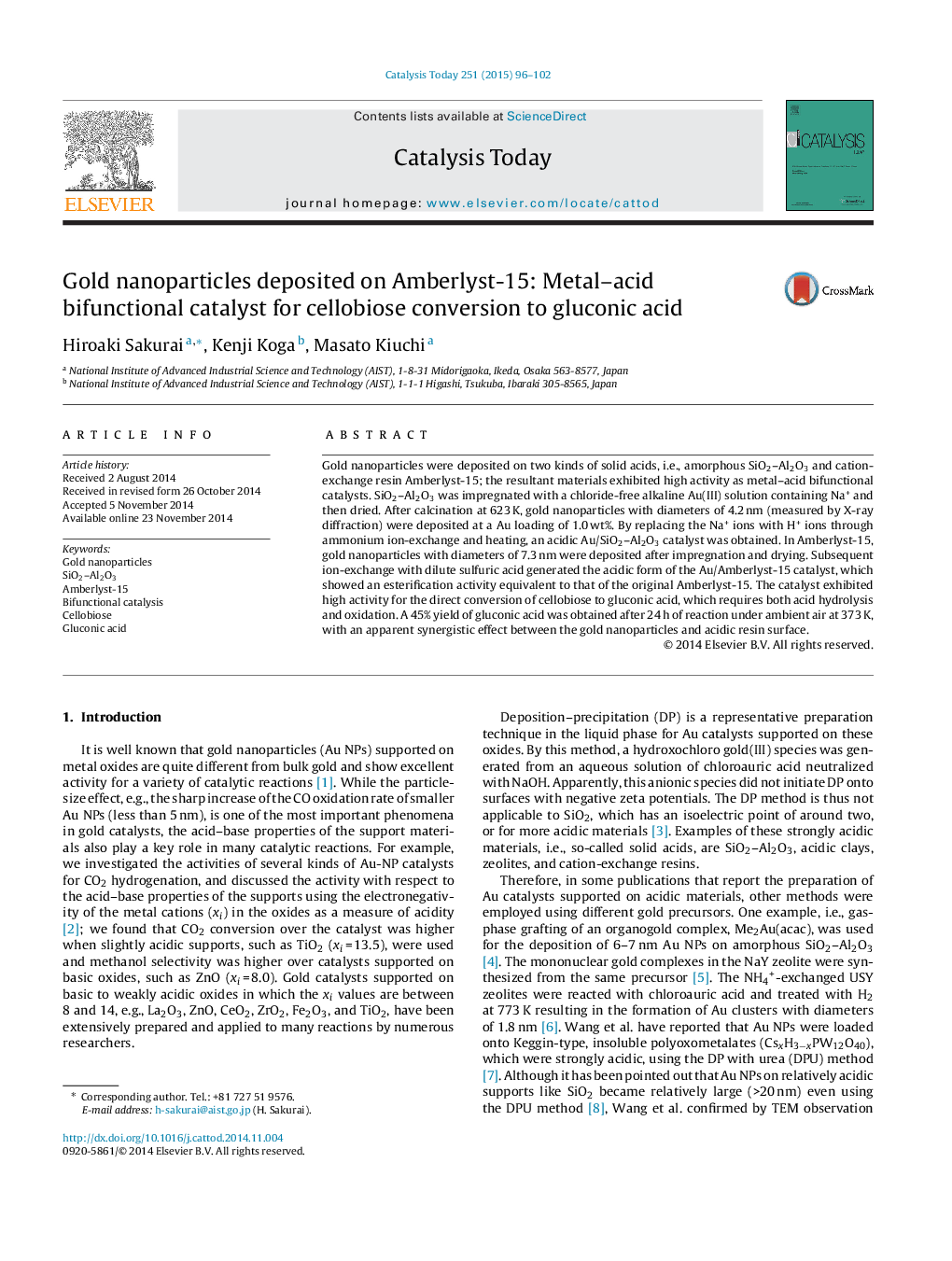| کد مقاله | کد نشریه | سال انتشار | مقاله انگلیسی | نسخه تمام متن |
|---|---|---|---|---|
| 54097 | 46996 | 2015 | 7 صفحه PDF | دانلود رایگان |

• Au solid-acid catalysts were prepared by alkaline impregnation of gold acetate.
• Au nanoparticles (<8 nm) were deposited on amorphous SiO2–Al2O3 and Amberlyst-15.
• Acidic form of the catalyst was obtained by the proton exchange after Au deposition.
• Acidic Au/Amberlyst-15 was efficient for metal–acid bifunctional catalysis.
• The catalyst afforded the direct conversion of cellobiose to gluconic acid at 373 K.
Gold nanoparticles were deposited on two kinds of solid acids, i.e., amorphous SiO2–Al2O3 and cation-exchange resin Amberlyst-15; the resultant materials exhibited high activity as metal–acid bifunctional catalysts. SiO2–Al2O3 was impregnated with a chloride-free alkaline Au(III) solution containing Na+ and then dried. After calcination at 623 K, gold nanoparticles with diameters of 4.2 nm (measured by X-ray diffraction) were deposited at a Au loading of 1.0 wt%. By replacing the Na+ ions with H+ ions through ammonium ion-exchange and heating, an acidic Au/SiO2–Al2O3 catalyst was obtained. In Amberlyst-15, gold nanoparticles with diameters of 7.3 nm were deposited after impregnation and drying. Subsequent ion-exchange with dilute sulfuric acid generated the acidic form of the Au/Amberlyst-15 catalyst, which showed an esterification activity equivalent to that of the original Amberlyst-15. The catalyst exhibited high activity for the direct conversion of cellobiose to gluconic acid, which requires both acid hydrolysis and oxidation. A 45% yield of gluconic acid was obtained after 24 h of reaction under ambient air at 373 K, with an apparent synergistic effect between the gold nanoparticles and acidic resin surface.
Figure optionsDownload high-quality image (238 K)Download as PowerPoint slide
Journal: Catalysis Today - Volume 251, 1 August 2015, Pages 96–102